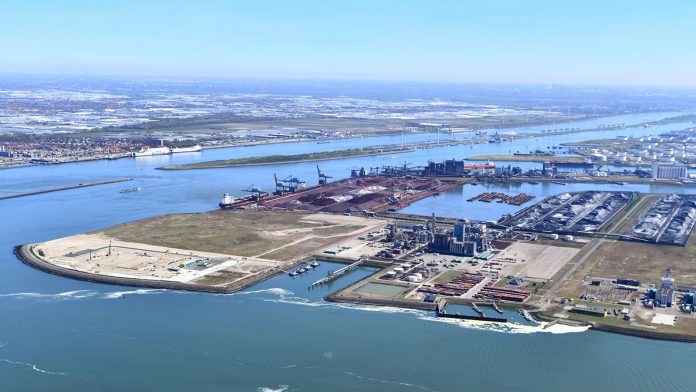
Port congestion and delays, particularly on the US West Coast, are having severe and ongoing adverse effects on supply chains, with shippers complaining of shortages of empty containers and that critical inland, intermodal connections are stymied through a lack of equipment and or labour.
In an effort to provide more visibility to stakeholders with the logistics chain Ocean Insights, which was recently acquired by project44, a supply chain visibility company, has announced the availability of a free port visibility reporting service, Port Intel.
Free for a limited time, Port Intel is an online service that produces a free report that summarises port congestion. Users can get the report by visiting the Port Intel site and entering vessel identifiers, and bill of lading or ocean container numbers. The report summarises average expected time out and port dwell times and best practices for oversees shipping visibility.
With the recent surge in demand for overseas goods – ports are getting overwhelmed with cargo, causing delays and complications for international supply chains.
“Every day we read headlines about port congestion and the downstream effects on the overall supply chain,” said Jett McCandless, founder and CEO of project44. “Ocean Insights from project44 provides real-time data for 96% of the world’s containerised ocean freight. Given the criticality of the port blockages, we unveiled Port Intel as a free service to enable global shippers to reveal where the delays are occurring and how they can mitigate delays and avoid future crises.”
The causes of the container pandemic, as some are calling it, have been the rapid recovery in demand following a similarly rapid decline in the first half of 2020. With US demand in the second half of the year far outstripping expectations. More than 150 extra vessel voyages were not enough to meet the surge.
And according to one senior executive the imbalance in productivity between China and the US was also a major factor. Asian factories and logistics companies, including ports, work 24 hours a day, seven days a week, but in the US working times are considerably shorter.
Dockers in the US do not work weekends, they work only 112 hours a week on the berth and just 88 hours a week on the terminal, with warehouses only working during daylight hours.
This means that production in Asia is 50% higher than in the US, and as import demand into the US surged the Asian operation went into overdrive while in the US, particularly on the West Coast shorter working times and a severe impact on the number of dockers, truck drivers and other staff caused a backlog to build very quickly. With anything between 30 and 40 vessels at anchorage in San Pedro Bay and delays on handling vessels at the berth the carriers believe that schedule reliability may be achieved by the second half of this year.
Major US ports are still reporting strong volumes, even though there has been a minor dip following the Lunar New Year and the three major import facilities are reporting increased volumes. The Port of New York & New Jersey has compared its 2021 volumes to 2019, which saw a 16% increase. While the Ports of Long Beach recorded a 43% increase in February and Los Angeles recorded a small increase from January 2020 to January 2021, before the pandemic crisis had its most severe effects.
Delays for vessels at the ports, particularly on the West Coast can be as much as 12 days, which is causing some vessels to miss sailings out of Asia, effectively reducing the amount of capacity on the trades, prolonging the congestion crisis.[/s2If]
[s2If !is_user_logged_in()]Please login or register to read the rest of the story[/s2If]





